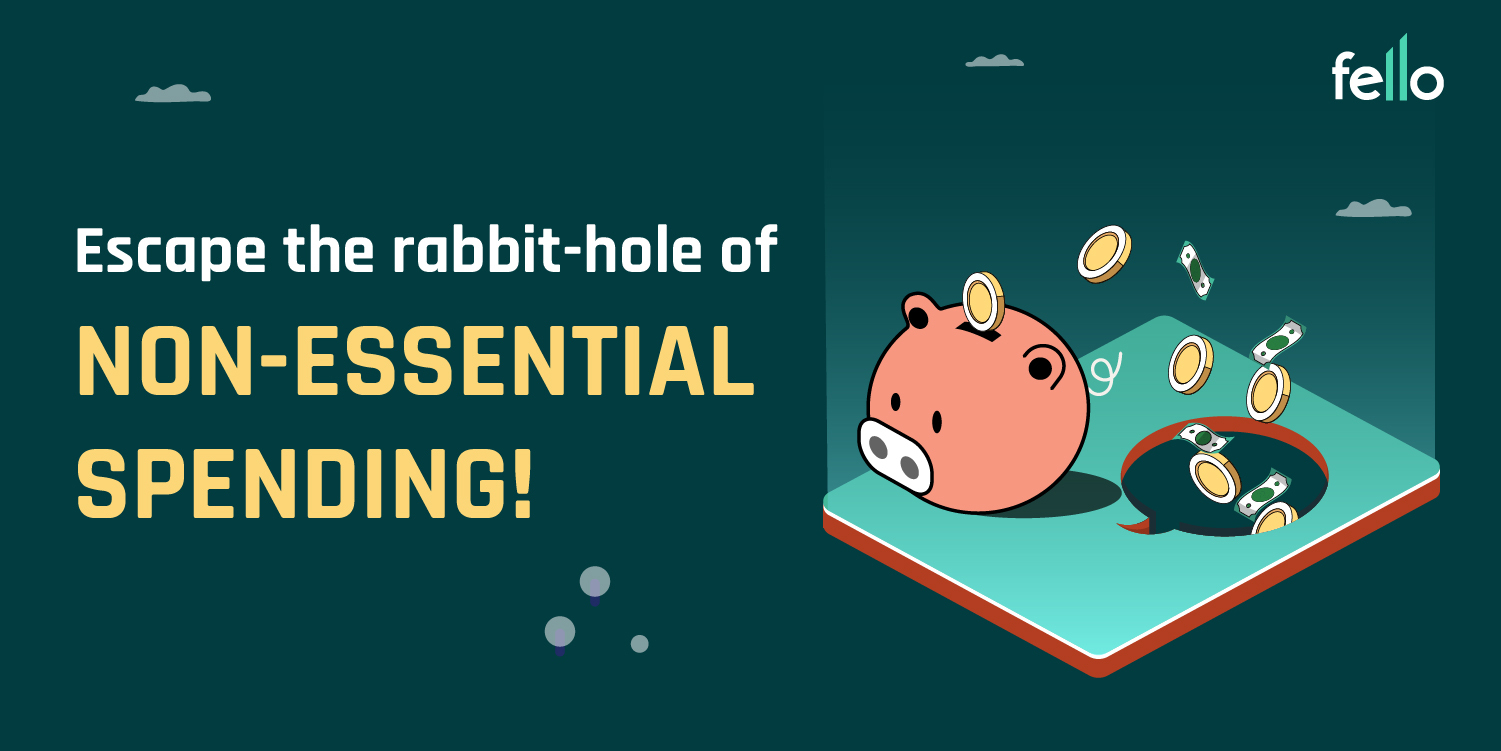In this day and age, the apps you use, and the ads you consume are designed to lure you into the rabbit hole of mindless spending!
You might have thought about buying a new pair of sneakers and searched for them across platforms. You might have gotten over that idea without a purchase, but that is all it takes for directed ads. These directed ads will show you enough options over the next few days across all platforms. And at one point you might be lured into making an impulsive purchase.
Thus we keep falling into the trap of non-essential spending!
Before we understand why, let’s understand what non-essential spending actually is.
Non-essential spending refers to purchases that are not necessary for basic needs or survival. These purchases can include things like luxury goods, and overspending on products. While non-essential spending can be enjoyable, there are also several disadvantages to consider.
In this blog, we’ll explore some of the main drawbacks of non-essential spending.
- The debt pit holds no mercy:
If your income isn’t 3x of your spending, eventually your spending spree will catch up and lead you towards debt. When people spend money on things they don’t really need, they may end up using credit cards or taking out loans to pay for those purchases. Over time, this can lead to a cycle of debt that can be difficult to break.
- A torn wallet won’t hold money:
In the world of UPI, you might wonder where your money is going! You see a jaw-dropping blazer and you are tempted to buy it, but is there any wedding around the corner? Nope! When you spend money on non-essential items, you will end up with less money available to save for emergencies or long-term goals. This will leave you not very confident about your retirement fund or even a housing loan. This leaves you vulnerable to financial instability in the future.
- You could have spent that money elsewhere:
Every rupee spent on non-essential items is a rupee that could have been spent on something else. This is known as opportunity cost. For example, imagine going out with friends and spending ₹3k, and realizing you could have spent that on your vehicle loan. And when one missed opportunity piles up over the other, it can lead to significant financial stability.
- Conflict of interest with people on spending:
When you spend on non-essentials, the people around you might have a conflict in opinion about it. This will end up negatively impacting your relationships with people. Additionally, in a family setup, if one partner is spending more while the other is saving more, it can create feelings of resentment and inequality.
- Decreased focus on health and well-being:
Lastly, non-essential spending can distract from a focus on health and well-being. When priorities shift, a lot changes along with it. When you constantly spend money on entertainment, luxury goods, and other non-essential items, they may be less likely to prioritize activities that are good for their physical and mental health, such as exercise, healthy eating, and self-care.
This sums up to one thing, mindless spending not only makes you financially poor but also puts you in a state of unhealthy habits.
While non-essential spending can be enjoyable in the short term, there are packed with disadvantages! To avoid these negative consequences, it’s important to prioritize spending on necessities and carefully consider purchases that are not essential.
Speaking about prioritizing, it is best to follow the 2:1:1 split on your salary. So ultimately 50% of the income goes to needs, 25% to wants, and 25% to savings and investing.

